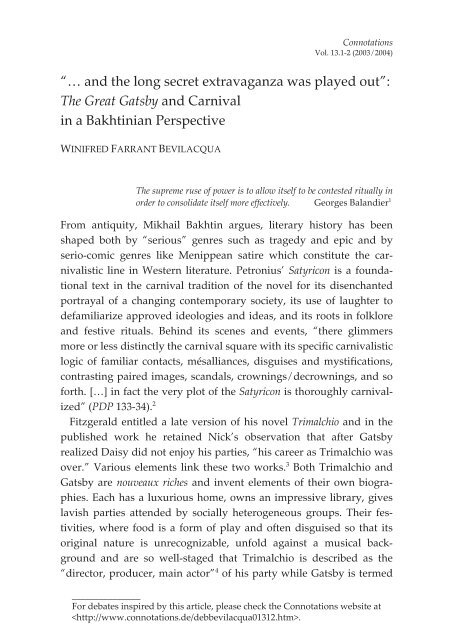

Gatsby also seems to use a network of contacts in order to escape justice, as he presents a ‘white card’ to the policeman when caught speeding. Bootlegging, fixing sporting events and cheating are clear examples of a social and economic system which is unfairly organised to privilege some people over others. The darker aspects of the American economy are embodied in the figures of Gatsby, Wolfsheim and the menacing, shadowy voices of Slagle and other callers. However, we see hints of Gatsby’s work, in the secretive phone calls and references to gangster activity, and it becomes clear that his wealth is based on criminality.

Gatsby is introduced at the height of his power and success, and is associated purely with pleasure and extravagantly expensive pursuits such as throwing parties, driving luxury cars and going out in a hydroplane. This was a new type of stock trading at the time and Nick has to learn about it himself. Nick’s occupation as a ‘bond man’ is never described in detail it involves trading in debt, which was a growing aspect of the economy, enabling the boom in consumer spending which supported the growth in manufacture. Nick is one of the less wealthy characters, and works in the stock exchange, but is still financially secure as his family is economically stable enough to support him in his work. He was a footballer, but having retired from this at a very young age, is now ‘restless’ and diverts himself with acquiring commodities, reading racist texts and his many affairs. Tom and Daisy never work, and Tom is said to be extraordinarily rich. There are some minor characters who are less wealthy, and a smaller number of servants and workers who are glimpsed working in the novel.

Looking at the novel as a whole, it is seen to depict mostly the very wealthy members of society, who do not work and spend much of their time at leisure. Marxist interpretations The economics of classĪ Marxist approach to The Great Gatsby might be concerned with the representations of social class, and the ways in which power and wealth are attained and retained by the characters. Resources for studying The Great Gatsby.Feminist interpretations of The Great Gatsby.Critical Approaches to The Great Gatsby.The use of religious imagery in The Great Gatsby.The Great Gatsby: Imagery and symbolism.More on Fitzgerald’s use of song in Chapter 5.The Great Gatsby: Synopses and commentary.Artistic expression in the modern world.Religious / philosophical context of The Great Gatsby.Social / political context of The Great Gatsby.Thomas Hardy, selected poems: context links.Romantic poets, selected poems: context links.The Return of the Native: context links.The Mayor of Casterbridge: context links.


 0 kommentar(er)
0 kommentar(er)
